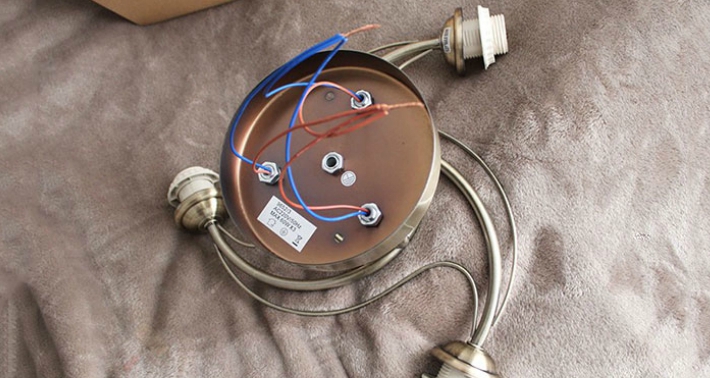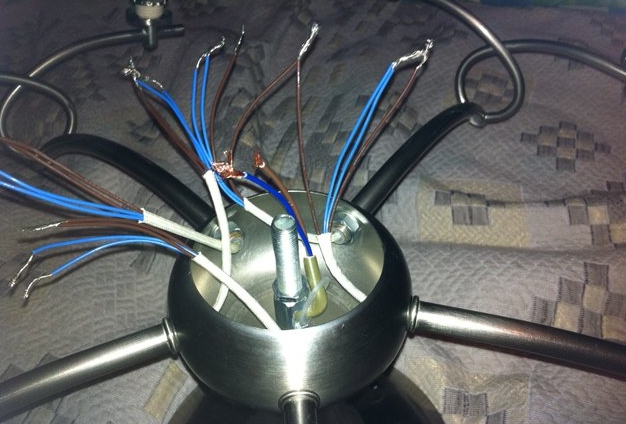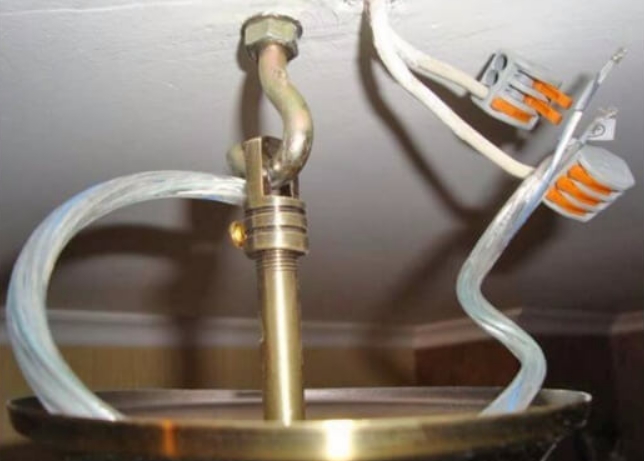Chandelier assembly and connection
To assemble a chandelier, you need to understand its construction and think about the scheme wiring, the options may be different. It is also necessary to study the instructions for assembly and determine which option of mounting it to the ceiling is the best. When connecting to the network, it is important to observe the polarity and ensure a reliable connection of the wiring.
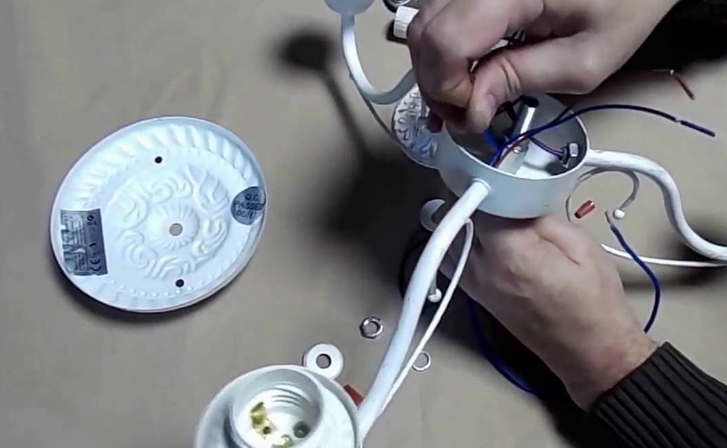
Stages of assembly and connection of chandeliers
Regardless of the design and the number of horns, the process can be divided into several stages. Each of them is important, so you need to understand all the nuances to do the work qualitatively and quickly:
- Assembling and connecting all the elements. The most important thing here is to understand the features of the design and study the instructions. Even if it is in a foreign language, there should be a scheme or photos with step-by-step tips for independent work. If there is no instruction, it is worth proceeding from the picture on the package, usually there are different angles.
- The correct grouping of wires. This point is especially important when using multi-key switches. There are several options here, depending on the number of lamps and the connection diagram, it is not difficult to figure out if you study the section below on this subject.The easiest way to group the wires is to use a single push-button switch
- Mounting a chandelier on the ceiling. It all depends on the mount that comes with it and on the material from which the partition is made. Usually you can choose between several options - self-tapping screws, dowel nails and special hooks, which can be both screwed into the wood, and hammered into the chops. And for hollow constructions use special fasteners with a spacer part, which opens above the surface of the cloth.
- Connecting chandelier leads to the wiring. It is necessary to observe the polarity. If the contacts are weak, then over time they burn out and the bulbs simply stop burning. And if you do not insulate the connection, then over time it will begin to oxidize, which is also undesirable.
Before finally attaching the contacts and covering the mounting location with a decorative cover, it is worth checking the operation of the system before assembly.
If there are additional recommendations in the manual, you should follow them when carrying out the work. When buying it is desirable to choose models with the Assembly Manual in Russian. Each step is worth breaking down in detail.
Mechanical assembly of the design
The more complex the chandelier and the more decorative elements on it, the more time will have to be spent on assembly. The process should be organized as follows:
- Unpack all the component parts and arrange them so that everything you need is at your fingertips. It is best to prepare a table and provide good lighting. You should have a set of screwdrivers and wrenches on hand so that there are no problems with the assembly.
- It is worth making sure that all parts are available. It is very important to make sure in advance in order to return the chandelier to the store or exchange it if there are problems.
- Assemble from the top of the enclosure, installing all necessary parts according to the instructions. Align all parts and clamp them with nuts or other fasteners.When attaching the horns in the hole, first pull the wires through
- Next, you must attach the horns, to do this, they are put on the seats and secured with a nut. It is necessary to choose a wrench of suitable size and do not clamp all the way. You should first make sure that they are positioned symmetrically and only then final mount.
- If necessary, it is necessary to pull the wires through the center tube. Often they are already laid, which simplifies the work.
With non-standard chandeliers, the process may be different, so when choosing it is better to see the design to understand how it is assembled.
It is worth remembering that the decor in models with pendants must be attached after installation. This also applies to the plafonds, you should not put them at once, it will simplify the installation. It is better to finally assemble the luminaire when it is hanging on the ceiling.
Video and construction:
Separating the wires into groups
Responsible stage, which depends on how the chandelier will work. Here everything depends on the necessary modes. It is not difficult to figure out, you need to remember a few recommendations:
- If a single-key switch will be used, it will not be difficult to connect the wires. Usually they come in two colors - the zero is always with blue or blue insulation, and the phase can have a different coating - from black or white, gray and many others, Chinese manufacturers do not have a single standard.
- When the model has two wires per lamp, and you need to divide the light to two keys, you need to follow a simple instruction. Consider how to divide the bulbs and connect the appropriate wires. Then connect them to the correct terminal of the switch. You can turn on in two modes, and if two buttons are pressed, all the lamps will be lit.
- For models with triple leads from each bulb, you can make different modes, combining them on 2,3 or even more keys. In this case you should combine them according to the chosen scheme, there are a lot of options.The more keys on the switch, the more difficult it is to group the wires
- When connecting the wires do not do twisting, as this is an unreliable option, because of which over time, the wiring will begin to heat up and can burn out. It is best to solder them with tin, then the connection will be reliable and durable.
- If you need to connect through the pad, which is most often used in modern equipment, then you should solder a copper wire to the twist. The length should be chosen so that it is convenient to connect the contacts. If possible, insulate the stranding with heat shrink tubing - this is the most reliable and durable solution.
You should strip the ends of the wires so that they are well connected and soldered.
Mounting the chandelier to the ceiling
Fasten the construction securely to avoid any problems. Choose the method depending on the material of the ceiling and the fastener that comes with it:
- In the wooden slab for the hook, you need to pre-drill a hole, the diameter of which is 2-3 mm less than the threaded part. Screw in by hand or with a screwdriver, which is simply inserted between the protrusions. Determine how much to leave outside to hang the chandelier.
- In the concrete slab you need to pick up a dowel for the size of the hook. Drill a hole in the concrete, the main thing is to choose the right depth so that the dowel enters completely. Hook can be both screwed in and gently hammered to the desired position.Variant with fixing on the hook
- If the kit comes with a mounting plate, then you need to put it to the surface and simply screw it with self-tapping screws (a variant for a wooden floor). Length to choose according to the situation, usually enough 4-5 cm.
- For a concrete ceiling, the process is a little more complicated. First, mark the holes and drill them to the diameter of the dowels. Dowels insert into the slab or through the plate and fasten. Then attach the chandelier and fix it with nuts that are screwed on the studs.
Video on the subject:
If there is a stretch ceiling in the room, then a special platform is pre-installed over the canvas, to which and need to mount the chandelier.
Finding the phase and connection
In order not to confuse anything, you should determine the exact location of the phase and zero. To do this, it is best to pre-prepare an indicator screwdriver and multimeter. Follow the simple recommendations:
- Disconnect the voltage in the network. In the cable that is connected, strip the ends by 1-2 cm and pull the wires apart so that they are guaranteed not to connect. Then turn on the voltage and check each lead with a screwdriver, holding the sting. The phase is where the lamp lights up, the second lead is the zero.
- If there are three wires, you need to determine which one is ground, you can't do it with a screwdriver. In this case you will also need a multimeter. First of all, the power wire is determined with a screwdriver. And then you need to place the multimeter contacts between the phase and the remaining wires. If the indicator 220V, then the second lead is zero, if the voltage is much lower, then it is ground.
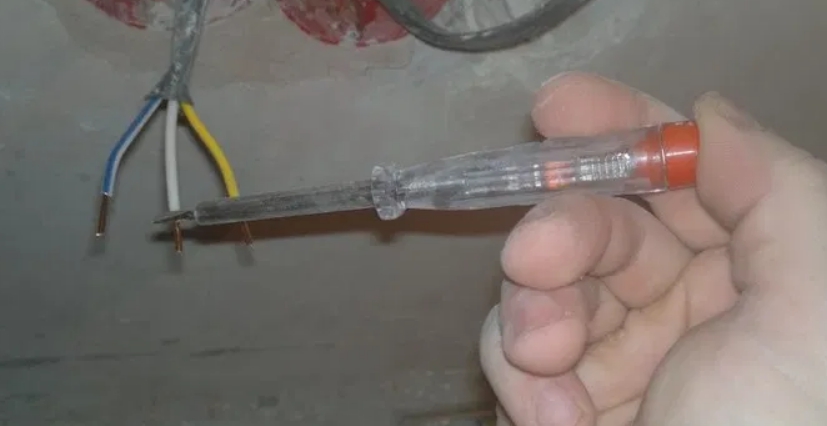
When carrying out the work to be careful. Do not touch the hands and do not connect the sting of a screwdriver cable, so as not to close the wiring.
Care and maintenance
For the equipment to last as long as possible, you should follow simple recommendations. The following should be remembered:
- It is advisable to wash all decorative elements with removal 1-2 times a year. You can soak the lamps in a soapy solution to make it easier to scrub away the dirt. In the kitchen, this should be done more often - once every 3-4 months.
- If there are crystal parts, they should not be soaked in a soapy solution, it makes them tarnish. It is best to add a little ammonia to the warm water for shine. After washing, hang them on a clean cloth until completely dry. It is best to hang up with cloth gloves, so that no fingerprints are left on the crystal.
- Wash the fixtures with glass cleaner. Apply it to the surface and leave it for a few minutes, then wipe it with a clean microfiber cloth.
- After washing, you should not turn on the chandelier for at least an hour, so that all elements have time to dry completely.
If you disassemble a complicated chandelier, take a picture of it so that you can put it back together without any problems.
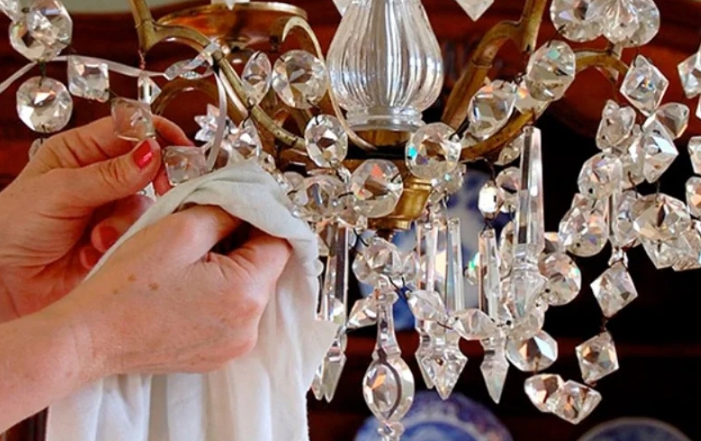
Assemble the chandelier with your own hands is not difficult if you buy a version with detailed instructions in Russian and clear diagrams. When assembling, think about the order in which the lights will be connected, especially if a multi-button switch will be used. Do not forget that from time to time the elements need to be washed.
